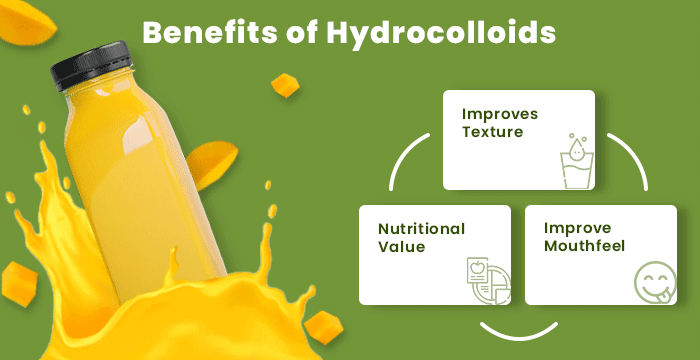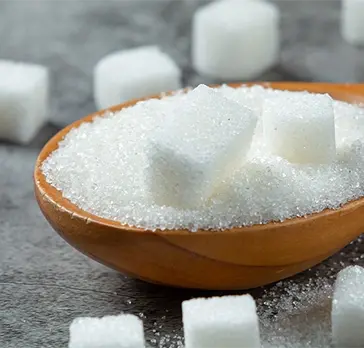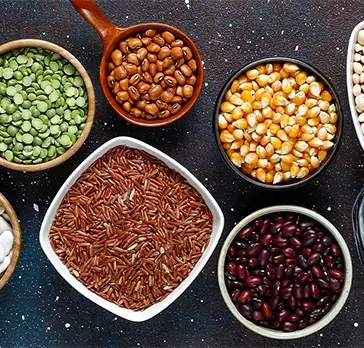One of the most often utilized additives in the food sector is hydrocolloids. Food and beverage producers use hydrocolloids to increase nutritional value, flavor, texture, and appearance while controlling functional qualities.
Today, the majority of people consume beverages. Whether at a party, work event, dinner with friends, or just a day at home. Soft drinks are consumed on a global scale, and the rate of consumption is rising daily. Consumers are looking for beverage products that add functionality to their energies, improve their general health, and are offered in convenient formats.
By 2025, it is predicted that the US beverage market will grow by 5.21%, while the global market will rise by 6%. According to Euromonitor, 1.23 billion units will be sold globally in 2020, with the bulk going to Western Europe (15.9%), North America (20.7%), and the Asia Pacific (39.5%).
In this blog, we will see the benefits of Hydrocolloids in beverages and in what ways they are used.
Hydrocolloids are been widely found in food and beverages. They work as thickeners, water retention agents, stabilizers, emulsifiers, gel-forming agents, and dietary fibers.
They also have been used in edible films, flavor encapsulation, and crystallization inhibition. Additionally, it is now known that hydrocolloids have a wide range of functions in the field of health, including the provision of dietary fiber with less calories.
Before jumping on the benefits, we gain from hydrocolloids, let us first know what exactly hydrocolloids are.
What is Hydrocolloid?
One of the most useful and widely used substances in today’s food and beverage business is hydrocolloids. They can increase functionality, enhance texture, and open up options for cost savings.
Any colloid system in which the colloid particles are hydrophilic polymers spread in water is referred to as a hydrocolloid. A hydrocolloid is a mixture of colloid particles and water that can exist in a variety of forms, such as gel or sol, depending on the amount of water present (liquid). Reversible (multi-state) or irreversible hydrocolloids are both possible. For instance, agar, a reversible hydrocolloid made from seaweed extract, may switch between its gel and solid states when heat is added or removed.
Also read:- Hydrocolloids Market Trends in Food Industry
Hence, it can give you the mechanisms you need to formulate or reformulate products to meet key trends and produce the textures, consistency, and visual appeal that consumers desire and expect.
Let us have a look at what are the primary perks of hydrocolloids in beverages.
Benefits of Hydrocolloids
Advances in hydrocolloid technology are primarily to blame for the innovation boom in the beverage industry. They maintain the suspension of other ingredients, such as fruit solids.

Benefits-of-Hydrocolloids
1. Improves Texture
Textures, which include Hydrocolloids/Gums, Emulsifiers, and Starches, are substances used to regulate and adjust the mouthfeel, shelf life, and freshness of food and beverages. They increase viscosity, stabilization, thickening, binding, and creaminess.
Trends are growing bolder, more authentic, sophisticated, specialized, and adventurous as consumers constantly seek new and exciting sensory eating and drinking experiences.
Choosing the correct texture for your food and beverage application can be lengthy and complex, with texture being influenced by the numerous components of a formulation.
At Novasol Ingredients, we have the breadth of portfolio and expertise to help you develop products that exceed consumer expectations.
2. Improve Mouthfeel
Maintaining mouthfeel is still one of the most significant issues for beverage formulators when employing hydrocolloids in reduced-sugar beverages.
Customers choose beverages with less calories or sugar. Due to this desire, many beverage manufacturers are looking for ways to reduce sugar content while maintaining the same flavor and sensory experience as a full-calorie beverage. Pectin, when used in very small amounts, can give customers a mouthfeel improvement, a more pleasant flavor, and a reduction in the aftertaste sometimes associated with highly concentrated sweets. We can restore the mouthfeel of low-calorie drinks by adding hydrocolloids to them. These specialized texturizing mixtures optimize and enhance the mouthfeel of low-calorie beverages.
3. Nutritional Value
The excessive use of high-fat and high-calorie foods has been linked to an incredibly alarming rise in chronic illnesses (CHD), such as cardiovascular disease, diabetes mellitus, and cancer. The overconsumption of food carbs has also been a cause for worry, and a joint has mandated that people consume more dietary fiber and less sugar.
Hydrocolloids have been broadly studied by Mankind from both a functional and nutritional standpoint for literally hundreds of years. There is much to learn about the function of hydrocolloids and the caliber of the finished product. And it is widely recognized that the interactions between various substances, including hydrocolloids, must be balanced in order for a product to be of high quality. A number of approaches are now available to assess the contribution of studies on individual molecules, interactions at the molecular and supramolecular levels, up to phase-separated systems, and gel networks.
However, reducing sugar consumption has become a global priority in recent years as obesity rates and the health problems associated with growing centers have risen.
Also read:- Ways to Reduce Sugar in Food Products
Hydrocolloids provide numerous options. Pectin gives fruit juices a very natural body while reducing their sugar content. Xanthan gum at low concentrations can also be a good substitute. Fortification with fiber has a positive impact on the final beverage, which can help to reduce sugar.
Consuming dietary hydrocolloids has been linked to several health advantages, including managing diabetes and weight, regulating the immune system and colon health, avoiding cardiovascular disease, and glycemic and insulinemic control.
Well, these were the functional benefits of hydrocolloids in beverages.
Conclusion
Numerous new beverage products are introduced to the market each year, most of them including at least one kind of hydrocolloid.
Advances in hydrocolloid technology are primarily to blame for the innovation boom in the beverage industry. They maintain the suspension of other ingredients, such as fruit solids. They preserve tastes and safeguard proteins against extreme heat and acidic fluids. However, it also helps in extending the shelf life of beverages. It reduces sugar applications, and they can even replicate the mouthfeel of sugar.
There are many hydrocolloids available for beverage suppliers to choose from. Among the many hydrocolloids that can be employed in foods and beverages are carrageenan, gellan gum, maltodextrin, pectin, tapioca starch, Sodium carboxymethyl cellulose gum, and xanthan gum.
Novasol Ingredients is India’s top food & beverage ingredient supplier with years of experience in the food industry. We provide high-quality ingredients while maintaining a level of division in the delivery of the ingredients. Our team believes in having a good client base; for that, we maintain transparency with every customer and maintain daily communication.
If you are looking for the best quality hydrocolloids, then feel free to contact us now.



